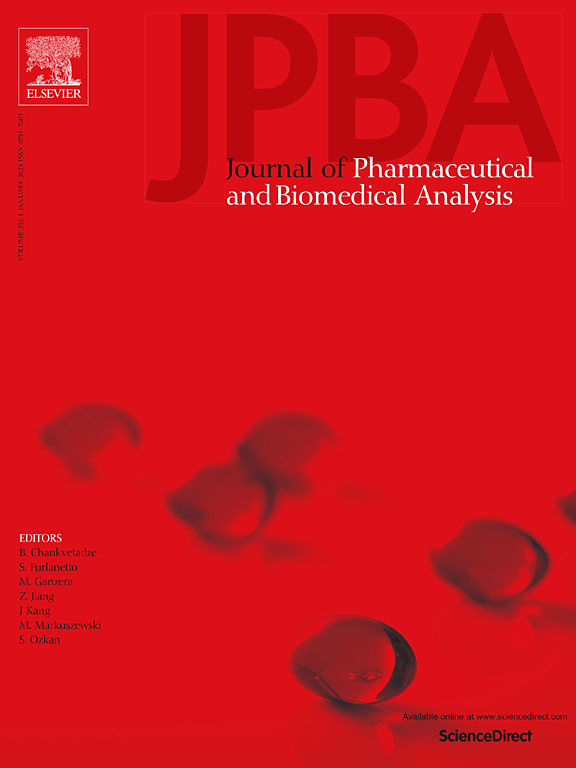A strategy integrated DNA barcoding with metabolomics for screening distinguishable combinatorial chemical quality marker between Pheretima aspergillum and Pheretima vulgaris Chen
IF 3.1
3区 医学
Q2 CHEMISTRY, ANALYTICAL
Journal of pharmaceutical and biomedical analysis
Pub Date : 2025-01-29
DOI:10.1016/j.jpba.2025.116716
引用次数: 0
Abstract
Pheretima is an animal-derived traditional Chinese medicines (TCMs). The chemical quality markers of Pheretima used to distinguish different species are still ambiguous. Under this premise, a strategy integrated DNA barcoding with metabolomics is promoted for identifying Pheretima and screening distinguishable combinatorial chemical quality marker (DCQ-marker) between Pheretima aspergillum (P. aspergillum) and Pheretima vulgaris Chen (P. vulgaris). As a result, adenosine, adenine, L-phenylalanine and uridine are successfully selected as DCQ-markers between P. aspergillum and P. vulgaris. This study provides convenient strategy for quickly screening DCQ-marker between P. aspergillum and P. vulgaris. It will be meaningful for further promoting quality control on Pheretima and providing a reference for the quality evaluation of other animal-derived TCMs.
求助全文
约1分钟内获得全文
求助全文
来源期刊
CiteScore
6.70
自引率
5.90%
发文量
588
审稿时长
37 days
期刊介绍:
This journal is an international medium directed towards the needs of academic, clinical, government and industrial analysis by publishing original research reports and critical reviews on pharmaceutical and biomedical analysis. It covers the interdisciplinary aspects of analysis in the pharmaceutical, biomedical and clinical sciences, including developments in analytical methodology, instrumentation, computation and interpretation. Submissions on novel applications focusing on drug purity and stability studies, pharmacokinetics, therapeutic monitoring, metabolic profiling; drug-related aspects of analytical biochemistry and forensic toxicology; quality assurance in the pharmaceutical industry are also welcome.
Studies from areas of well established and poorly selective methods, such as UV-VIS spectrophotometry (including derivative and multi-wavelength measurements), basic electroanalytical (potentiometric, polarographic and voltammetric) methods, fluorimetry, flow-injection analysis, etc. are accepted for publication in exceptional cases only, if a unique and substantial advantage over presently known systems is demonstrated. The same applies to the assay of simple drug formulations by any kind of methods and the determination of drugs in biological samples based merely on spiked samples. Drug purity/stability studies should contain information on the structure elucidation of the impurities/degradants.
文献相关原料
公司名称
产品信息
索莱宝
phenylalanine
索莱宝
threonine
索莱宝
arginine
索莱宝
alanine
索莱宝
histidine
索莱宝
serine
索莱宝
tyrosine
索莱宝
isoleucine
阿拉丁
ammonium formate (AF)
阿拉丁
asparagine
阿拉丁
proline
阿拉丁
tryptophan
阿拉丁
methionine

 求助内容:
求助内容: 应助结果提醒方式:
应助结果提醒方式:


